 W
WApollo 17 was the final Moon landing mission of NASA's Apollo program, and remains the most recent time humans have travelled beyond low Earth orbit. Its crew consisted of Commander Eugene Cernan, Lunar Module Pilot Harrison Schmitt, and Command Module Pilot Ronald Evans, and it carried a biological experiment containing five mice.
 W
WThe Lunar basalt 70017 is a Moon rock gathered in 1972 by astronauts Eugene Cernan and Harrison Schmitt on the Apollo 17 mission near their Apollo Lunar Module from the valley of Taurus-Littrow on the Moon, and then divided into 1.1 gram pieces on Earth.
 W
WThe ALSE was a ground-penetrating radar experiment that flew on the Apollo 17 mission.
 W
WApollo in Real Time is an interactive, multimedia website that presents the Apollo 11, Apollo 13, and Apollo 17 missions as they happened at the time by compiling and synchronizing thousands of hours of audio and video recordings, transcripts, and photographs. Apollo historian Ben Feist created the Apollo 11 and Apollo 17 real-time sites, and was a NASA contractor by the time he created the Apollo 13 real-time site. Air & Space magazine describes the Apollo 13 site as "one of the most ambitious multimedia history sites ever created".
 W
WBack to the Moon is a science fiction novel and Homer Hickam's first fictional book. Published in June 1999, Hickam wrote Back to the Moon using insider information he learned from NASA.
 W
WThe Blue Marble is an image of Earth taken on December 7, 1972, from a distance of about 29,000 kilometers from the planet's surface. It was taken by the crew of the Apollo 17 spacecraft on its way to the Moon, and is one of the most reproduced images in history.
 W
WBowen-Apollo is a feature on Earth's Moon, a crater in Taurus-Littrow valley, located at the foot of the Sculptured Hills. Astronauts Eugene Cernan and Harrison Schmitt landed to the southwest of it in 1972, on the Apollo 17 mission. They referred to it simply as Bowen during the mission. It is located just east of Geology Station 8.
 W
WBrontë is a feature on Earth's Moon, a crater in Taurus-Littrow valley. The astronauts Eugene Cernan and Harrison Schmitt drove along the north rim of it in their Lunar Roving Vehicle on the Apollo 17 mission in 1972.
 W
WCamelot is a feature on Earth's Moon, a crater in Taurus-Littrow valley. Astronauts Eugene Cernan and Harrison Schmitt visited it in 1972, on the Apollo 17 mission, during EVA 2. Geology Station 5 was along the south rim of Camelot.
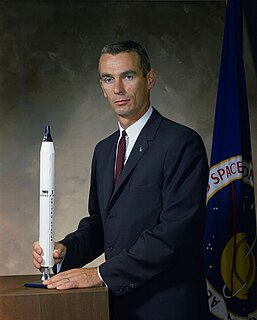 W
WEugene Andrew Cernan was an American astronaut, naval aviator, electrical engineer, aeronautical engineer, and fighter pilot. During the Apollo 17 mission, Cernan became the eleventh person to walk on the Moon. As he re-entered the Apollo Lunar Module after Harrison Schmitt on their third and final lunar excursion, he was the last person to walk on the Moon.
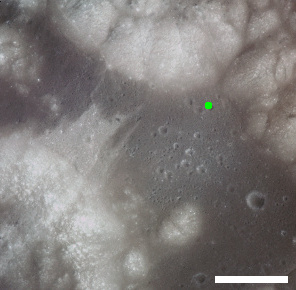 W
WCochise is a feature on Earth's Moon, a crater in Taurus-Littrow valley. Astronauts Eugene Cernan and Harrison Schmitt landed southwest of it in 1972, on the Apollo 17 mission. They drove along its rim in the rover during EVA 3, but did not stop.
 W
WThe Apollo 17 lunar sample display consists of a Moon rock fragment from a lava Moon stone identified as lunar basalt 70017, the recipient's flag and two small metal plates attached with descriptive messages. A goodwill gift from the Apollo 17 mission was then given in the form of a wooden commemorative plaque display individually to all fifty states, five U.S. territories, and 135 nations worldwide.
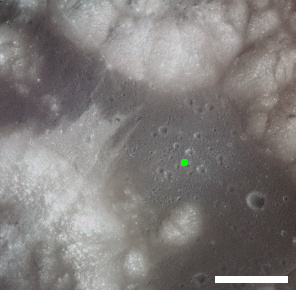 W
WEmory is a feature on Earth's Moon, a crater in Taurus–Littrow valley. Astronauts Eugene Cernan and Harrison Schmitt landed north of it in 1972, on the Apollo 17 mission, but did not visit it.
 W
WCapt. Ronald Ellwin Evans Jr., USN was an American naval officer and aviator, electrical engineer, aeronautical engineer, and NASA astronaut. He was one of the 24 astronauts to have flown to the Moon, and one of 12 people to have flown to the Moon without landing on it.
 W
WFe, Fi, Fo, Fum, and Phooey were five mice who traveled to the Moon and circled it 75 times on the 1972 Apollo 17 mission. NASA gave them identification numbers A3326, A3400, A3305, A3356, and A3352, and their nicknames were given by the Apollo 17 crew, Eugene Cernan, Harrison Schmitt, and Ronald Evans. The four male mice, one female mouse, and Evans orbited the Moon for six days and four hours in the Apollo command module America as Cernan and Schmitt performed the Apollo program's last lunar excursions. One of the mice died (A-3352) during the trip, and the four others were killed and dissected for their intended biological information upon their successful return from the Moon.
 W
WHenry is a feature on Earth's Moon, a crater in Taurus–Littrow valley, located at the foot of the Sculptured Hills. Astronauts Eugene Cernan and Harrison Schmitt landed to the southwest of it in 1972, on the Apollo 17 mission.
 W
WHess-Apollo is a feature on Earth's Moon, a crater in Taurus–Littrow valley. Astronauts Eugene Cernan and Harrison Schmitt landed north of it in 1972, on the Apollo 17 mission, but did not visit it. The astronauts referred to it simply as Hess during the mission.
 W
WHoratio is a feature on Earth's Moon, a crater in Taurus-Littrow valley. Astronauts Eugene Cernan and Harrison Schmitt drove the Lunar Roving Vehicle along its south rim in 1972, on the Apollo 17 mission, but did not stop.
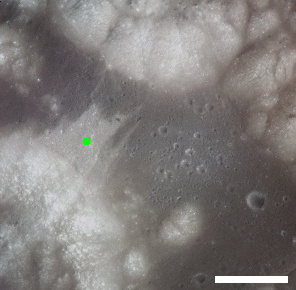 W
WLara is a feature on Earth's Moon, a crater in Taurus-Littrow valley. Astronauts Eugene Cernan and Harrison Schmitt visited it in 1972, on the Apollo 17 mission, during EVA 2. Geology Station 3 of the mission is located on the northeast rim of Lara.
 W
WThe Lunar Roving Vehicle (LRV) is a battery-powered four-wheeled rover used on the Moon in the last three missions of the American Apollo program during 1971 and 1972. They are popularly known as "Moon buggies", a play on the words "dune buggy".
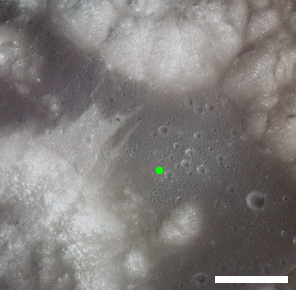 W
WMackin is a feature on Earth's Moon, a crater in Taurus–Littrow valley. Astronauts Eugene Cernan and Harrison Schmitt landed north of it in 1972, on the Apollo 17 mission, but did not visit it.
 W
WNansen-Apollo is a feature on Earth's Moon, a crater in Taurus-Littrow valley, at the base of the South Massif. Astronauts Eugene Cernan and Harrison Schmitt visited it in 1972, on the Apollo 17 mission. The astronauts referred to it simply as Nansen during the mission. Geology Station 2 of the mission was located at Nansen. Nansen is located in the 'light mantle' which is almost certainly an avalanche deposit from the South Massif.
 W
WPowell is a feature on Earth's Moon, a crater in Taurus–Littrow valley. Astronauts Eugene Cernan and Harrison Schmitt landed less than 1 km northeast of it in 1972, on the Apollo 17 mission, but they did not visit it.
 W
WHarrison Hagan "Jack" Schmitt is an American geologist, retired NASA astronaut, university professor, former U.S. senator from New Mexico, and the most recent person still living to have walked on the Moon.
 W
WShakespeare is a feature on Earth's Moon, a crater in Taurus–Littrow valley. Astronauts Eugene Cernan and Harrison Schmitt landed southwest of it in 1972, on the Apollo 17 mission. They did not visit it, but in fact drove around it during EVA 3.
 W
WSherlock is a feature on Earth's Moon, a crater in Taurus–Littrow valley. Astronauts Eugene Cernan and Harrison Schmitt drove their rover to the north of it in 1972, on the Apollo 17 mission. They photographed the rim, as shown below.
 W
WShorty is a feature on Earth's Moon, a likely volcanic crater in the Taurus–Littrow valley. Astronauts Eugene Cernan and Harrison Schmitt visited it in 1972, on the Apollo 17 mission. It is the location of the famous "orange soil". It is about 110 meters in diameter and up to 14 m (15 yd) deep.Shorty Crater is about 14 m deep. Based on our investigations at the site and later examination of photographs, the impact that formed it penetrated, in order, regolith on the avalanche deposit, the avalanche deposit, regolith on a basalt flow, a basalt flow overlying and protecting the orange and black glass layers, the orange and black glass layers, regolith on a second basalt flow, and, finally, the upper portion of that second flow. Orange and black glass clods and basalt boulders are spread throughout the ejecta blanket surrounding Shorty.
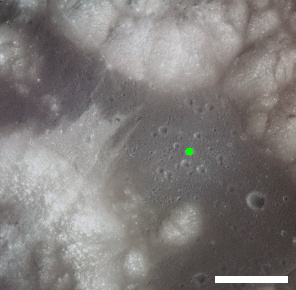 W
WSteno-Apollo is a feature on Earth's Moon, a crater in Taurus-Littrow valley. Astronauts Eugene Cernan and Harrison Schmitt visited it in 1972, on the Apollo 17 mission. The astronauts referred to it simply as Steno during the mission. The north rim of Steno is Geology Station 1 of the mission.
 W
WTaurus–Littrow is a lunar valley located on the near side at the coordinates 20.0°N 31.0°E. It served as the landing site for the American Apollo 17 mission in December 1972, the last crewed mission to the Moon. The valley is located on the southeastern edge of Mare Serenitatis along a ring of mountains formed between 3.8 and 3.9 billion years ago when a large object impacted the Moon, forming the Serenitatis basin and pushing rock outward and upward. Taurus–Littrow is located in the Taurus mountain range and south of Littrow crater, features after which the valley received its name. The valley's name, coined by the Apollo 17 crew, was eventually approved by the International Astronomical Union in 1973.
 W
WTrident is a feature on Earth's Moon, a crater in Taurus-Littrow valley. Astronauts Eugene Cernan and Harrison Schmitt landed about 300 m north of its rim in 1972, on the Apollo 17 mission. They drove along the east rim of Trident during EVA 1 of the mission, in their rover.
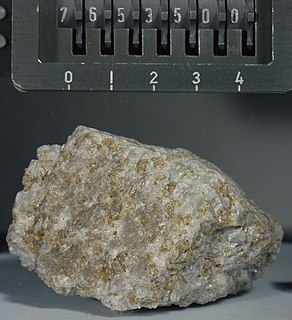 W
WTroctolite 76535 is a lunar sample discovered and collected on the Apollo 17 mission in 1972 in the Taurus–Littrow valley. It has a mass of about 156 grams (5.5 oz) and is about 5 centimetres (2.0 in) across at its widest point. It was collected by geologist astronaut Harrison Schmitt as part of a "rake sample" of lunar soil at Geology Station 6, near the base of the North Massif.
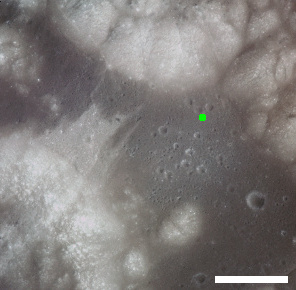 W
WVan Serg is a feature on Earth's Moon, a crater in Taurus–Littrow valley. Astronauts Eugene Cernan and Harrison Schmitt visited it in 1972, on the Apollo 17 mission, during EVA 3. Van Serg was designated Geology Station 9.
 W
WVictory is a feature on Earth's Moon, a crater in Taurus–Littrow valley. Astronauts Eugene Cernan and Harrison Schmitt visited it in 1972, on the Apollo 17 mission, during EVA 2. The astronauts stopped at the south rim of Victory on their way back to the Lunar Module from Shorty crater.